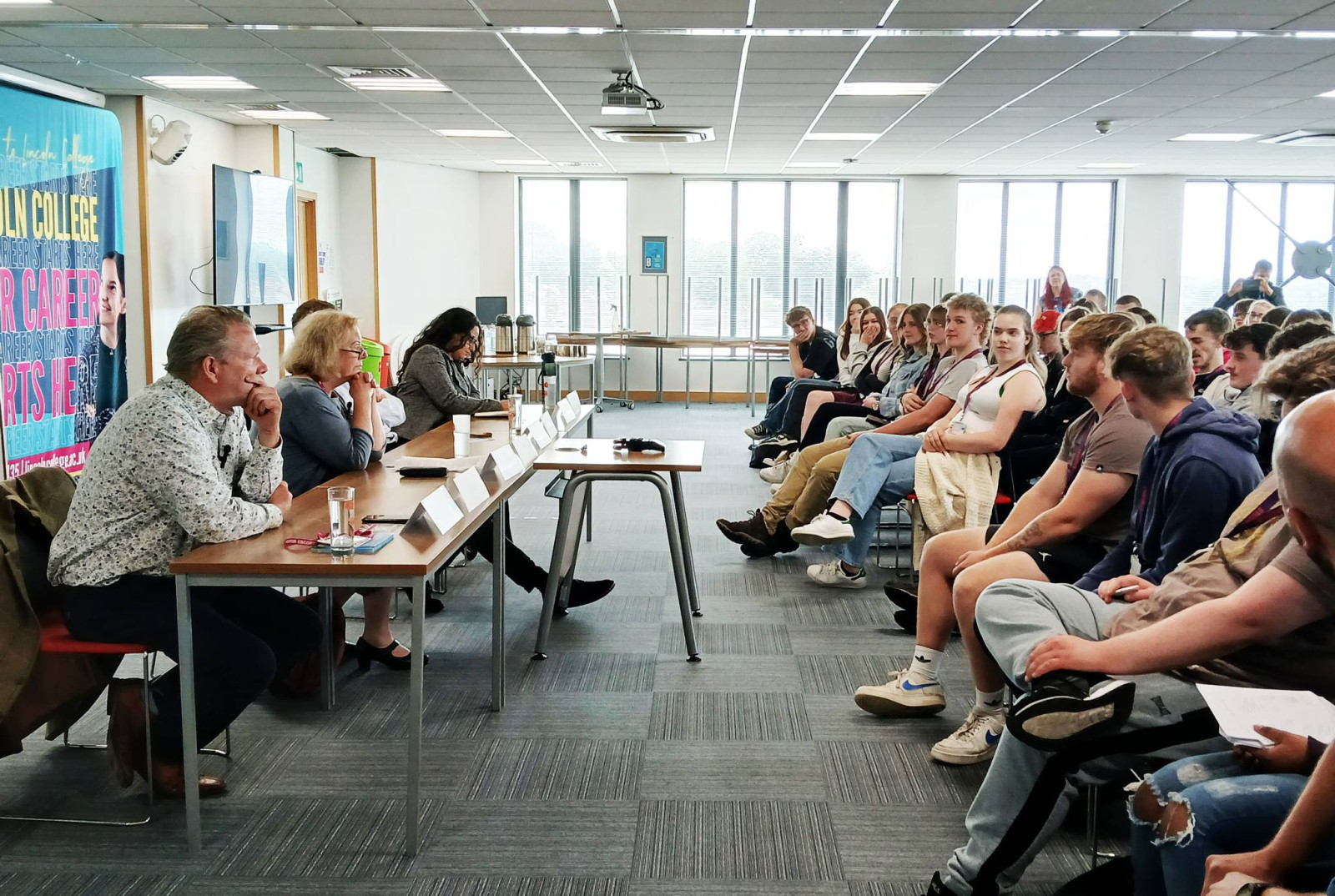As a Hairdresser, you will be able to shampoo and condition hair and cut hair using a range of techniques, style and finish hair to create a variety of looks, and colour and lighten hair.
You also need to be able to carry out consultations with clients, demonstrate the professionalism, values, behaviours, communication skills and safe working practices associated with the role and be able to work without supervision to a high level of precision, with exceptional client care skills.
The work environment can be varied in size, style and ambience, from salons, the media industry and cruise ships to product houses and manufacturers. You will be a highly skilled individual professional who delivers traditional innovative styles inspired by images and your own creativity, individual flair, imagination and interpretation.
Typical Job Roles: Hair Stylists, Advanced senior stylists, Senior hair professionals or Specialist technicians.
Off the Job Training
A key requirement of an Apprenticeship is Off-the-job training. This must make up an average of six hours per week of your working hours, over the total duration of your planned training period. Off-the-job training must be directly relevant to the apprenticeship standard and must take place within your normal working hours.
The new learning must be documented and reflected on through the Learner Journal on your e-portfolio.
You’ll need Level One Maths and English. You will also need to be in a relevant role and show a willingness to undertake the knowledge, skills and behaviours identified below to the appropriate level. You will be required to work towards a Level Two Functional Skills in English and Maths if you have not achieved a grade C/Four. (This could be block sessions).
Once you have been accepted onto the programme you will be required to attend a Lincoln College Induction. You will require access to a tablet/computer to access your e-portfolio.
Assessment is done through a combination of practical tasks, written assignments, oral discussions and online tests throughout the course. To ensure that we can support you in meeting these, we will complete an in-depth initial skills analysis to ensure that we can tailor our delivery to meet these unique requirements. We will then use the most relevant delivery methods to support your learners which include:
One-to-one coaching from a dedicated, professional tutor allocated to the learner for the duration of the programme.
Work based assignments and projects.
Job shadowing and mentoring.
Employer led technical training.
Independent learning and research.
This is a two-year course where attendance at College is one day a week. You will be continually assessed through practical work on paying clients in Salon and at College. In addition to this, you will be required to take an online theory exam for each unit.
End Point Assessment
There will be an End Point Assessment (EPA) as the final stage of an Apprenticeship. You must demonstrate your learning to an independent end point assessor and the overall grade available is distinction, pass or fail. This will only take place when the C&G Level Two Diploma for Hair Professional & English/Maths is achieved and all parties agree that the apprentice is ready for the EPA.
Methods of assessments for this standard are:
Practical observation
You must complete a range of services on at least two models to industry standards and within commercial timings.
There is a time limit of six hours on this task.
Oral questioning
Your consultation skills
Communication skills
Safe working practices
Professionalism, values and behaviours will also be assessed by oral questioning at the end of the six hours.
Qualification
C&G Level Two Diploma for Hair Professional
Progression
This apprenticeship provides an ideal entry into the occupation and supports progression within the sector as a junior stylist and progress to a Level Three Hairdressing qualification. Other progression routes include work on cruise ships.
You will require workwear and Personal Protective Equipment (PPE) and kit from our preferred supplier; you will also need general stationery equipment and access to the internet.
Lincoln College have facilities at Lincoln, Gainsborough and Newark to deliver training to apprentices. High quality of teaching by qualified and experienced industry experts; an excellent balance of theory and practical sessions. Training is delivered on a 1:1 basis in the workplace. This is a two-year programme where attendance at College is one day a week. Your apprentice will be continually formatively assessed through practical work on paying clients in your Salon and at College. In addition to this they will be required to take an online theory exam for each unit. Our employers are actively involved in the training with assessments carried out in the workplace. Through partnership collaboration your apprentice’s progression and development will be supported and reviewed regularly through face to face and remote contact through the use of an e-portfolio.
Mandatory core skills and knowledge for hairdressing
Professionalism and values:
Demonstrate professionalism and a passion for the industry
Have a commitment to quality
Have a positive attitude and team working
Work under pressure; observe time management and self-management
Show a willingness to learn; complete services in a commercially viable time and to a high standard
Meet organisational and industry standards of appearance
Observe professional ethics.
Industry codes of practice and ethics
Quality assurance systems
Time management principles
Self-management principles
commercially viable times for the completion of services
industry and organisational standards of appearance
The importance of continuing
professional development, equality and diversity.
Safe working practices
Maintain effective, hygienic and safe working methods
Adhere to workplace, suppliers’ or manufacturers’ instructions for the safe use of equipment, materials and products
Meet legal and organisational requirements; maintain the client’s modesty, privacy and comfort
Minimise risks of cross-infection, injury or fatigue
Promote environmental and sustainable working practices
ensure personal hygiene and protection meets industry, organisational and local authority requirements
Correctly use Personal Protective Equipment.
Legal and organisational requirements
Use of tools, equipment, materials and products
Adherence to workplace cleaning, disinfection, sterilisation, supplier or manufacturer’s instructions
Waste disposal
Client preparation and protection
Direct and indirect cross-infection
Methods that promote environmental and sustainable working practices
Reducing risk of injury to self and others
Posture
Personal hygiene
Protection
Health and safety legislation and practice.
Creatively assess the client’s requirements; examine the hair, skin and scalp; facial characteristics including face shape, skin tone, hair colour, lifestyle and suitability
Conduct visual checks and any necessary tests on the hair, skin and scalp
Advise clients on services or products
Identify the client’s hair characteristics and hair classification
Advise clients on hair maintenance and management.
Visual aids for client consultation
Salon procedures and manufacturers’ instructions for conducting tests
The types and purposes of tests; how lifestyle factors limit or affect services
Incompatibility of previous services and products used
Hair, skin and scalp problems
Suspected infections or infestations
Hair characteristics and classifications
Basic structure of hair and skin
the growth cycle of hair
services or products available for use in the salon or for retail
Legal responsibilities
salon pricing structure
Shampoo, condition and treat the hair and scalp
Use products and tools
Use massage techniques
Use shampoo and conditioning products.
How shampoos and conditioning products affect the hair and scalp
When and how to use different massage techniques and the various effects of conditioning treatments.
Cut hair using a range of techniques to create a variety of looks: Use a range of cutting techniques including one length, fringe cutting, precision cutting techniques, scissor over comb, texturising, layering techniques, graduation and clipper work.
How and when to use different cutting techniques and relevant tools and the effects achieved
Weight distribution and working with the natural growth patterns of the hair; cutting angles and resulting weight distribution and balance and the degree of graduation.
Style and finish hair using a range of techniques to create a variety of looks
Use a range of styling tools and equipment to create a look including blow drying; hair-up styles; setting and dressing; finger drying; plaiting/braiding twisting and using additional hair.
Current techniques for drying and finishing hair; drying and finishing products
Tools and equipment available for drying and finishing men and women’s hair
Hair-up styles; setting and dressing; finger drying; plaiting/ braiding and twisting, and using additional hair.
Colour and lighten hair using a range of techniques: Complete a range of woven highlights including T-section, half head. Full head using temporary, semi-permanent, quasi-permanent, permanent colour application, and basic colour change (depth and tone) techniques.
The principles of colour selection; how the natural pigment within hair affects the choice of colour and colouring product; the effect of different colouring and lightening products on the hair structure, and when to use the different types of lighteners and toners available.
Perming hair: Use a range of products and techniques including sectioning and winding, taking into account critical influencing factors.
The effects of perms and neutralisers on the hair structure, products and equipment, contra-indications to perming hair and tests required throughout the perming and neutralising processes
Greet clients in a friendly manner
Choose the most appropriate way of communicating with clients
Be helpful and courteous at all times
Adapt behaviour in response to each client
Respond promptly to clients seeking assistance
Establish client expectations and needs
Explain clearly any reasons why the client’s needs or expectations cannot be met
willingly undertake wider salon duties, including reception duties where appropriate.
Employers have designed the Apprenticeship Standards to meet the needs of the sector and industry. Ensuring they include:
Relevant Knowledge, skills and behaviours ensure that the Standard is relevant to the occupation.
Widening participation Apprenticeship standards provide opportunities to employees that may not previously have been available.
Development tools A cost effective way to train your employees to undertake specific roles in your business.
Return on Investment On average, an apprentice who has completed their course will increase business productivity by £214 per week (CEBR, 2015).
As an Apprentice, you will pay no course fees. However, your employer may have to pay towards your training as well as providing you with a wage. All Apprentices are entitled to the national minimum apprentice wage within their first year of training from their employer, although they can, and often do, pay more. In the second and subsequent years of an Apprenticeship programme, if you are aged 19 or over, the national minimum wage for your age would apply [https://www.gov.uk/national-minimum-wage-rates]
If you are an employer and want to find out more information regarding employer contributions and any further costs related to the Apprenticeship programme, please contact our dedicated Apprenticeship team at [email protected]
Apply Now
-
Open Day
Find next open day



